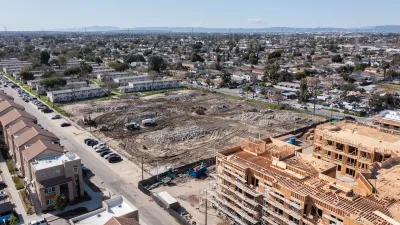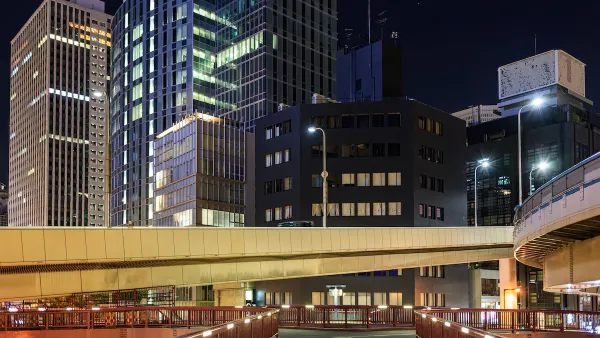AB 2243 paves the way for easier conversion of industrially and commercially zones properties for residential development.

In an analysis for The National Law Review, Brooke Miller outlines the potential impacts of California Assembly Bill 2243, which was signed into law by Governor Gavin Newsom last month.
The law expands the type of sites eligible for expedited approvals, adding regional mall properties of up to 100 acres that could help make larger multifamily developments with affordability requirements more financially feasible. The law also allows development within 500 feet of a freeway (previously prohibited), provided that the development takes steps to improve air quality.
According to Miller, “AB 2243 also provides some relief from the strict minimum density requirements of AB 2011, instead designating the “allowable” density- but still requires projects to meet at least 50% of the allowable density (75% for sites within ½ mile of an existing rail or bus rapid transit station) through 2026; after January 1, 2027, 75% is the minimum.”
AB 2243 also addresses a provision that usually requires developers to add common open space to new residential development, recognizing that the physical limitations of a site can make meeting that requirement challenging. “For both conversion and redevelopment projects, AB 2243 also limits mitigation fees to the incremental impact of the development, in recognition that the existing use likely already contributed to mitigating some development impacts.”
AB 2243 adds more qualifying “surrounding urban uses” to free up more sites for housing development. “AB 2243 also takes aim at AB 2011’s exclusion for sites in a “neighborhood plan”, which can work against a project in an outdated community plan area or a jurisdiction with few areas outside such planning boundaries.”
FULL STORY: State of Conversion: Update on Adaptive Reuse and Conversion Legislation

National Parks Layoffs Will Cause Communities to Lose Billions
Thousands of essential park workers were laid off this week, just before the busy spring break season.

Retro-silient?: America’s First “Eco-burb,” The Woodlands Turns 50
A master-planned community north of Houston offers lessons on green infrastructure and resilient design, but falls short of its founder’s lofty affordability and walkability goals.

Delivering for America Plan Will Downgrade Mail Service in at Least 49.5 Percent of Zip Codes
Republican and Democrat lawmakers criticize the plan for its disproportionate negative impact on rural communities.

Test News Post 1
This is a summary

Test News Headline 46
Test for the image on the front page.

Balancing Bombs and Butterflies: How the National Guard Protects a Rare Species
The National Guard at Fort Indiantown Gap uses GIS technology and land management strategies to balance military training with conservation efforts, ensuring the survival of the rare eastern regal fritillary butterfly.
Urban Design for Planners 1: Software Tools
This six-course series explores essential urban design concepts using open source software and equips planners with the tools they need to participate fully in the urban design process.
Planning for Universal Design
Learn the tools for implementing Universal Design in planning regulations.
EMC Planning Group, Inc.
Planetizen
Planetizen
Mpact (formerly Rail~Volution)
Great Falls Development Authority, Inc.
HUDs Office of Policy Development and Research
NYU Wagner Graduate School of Public Service





























